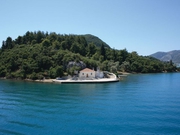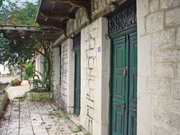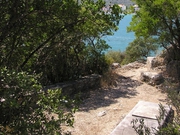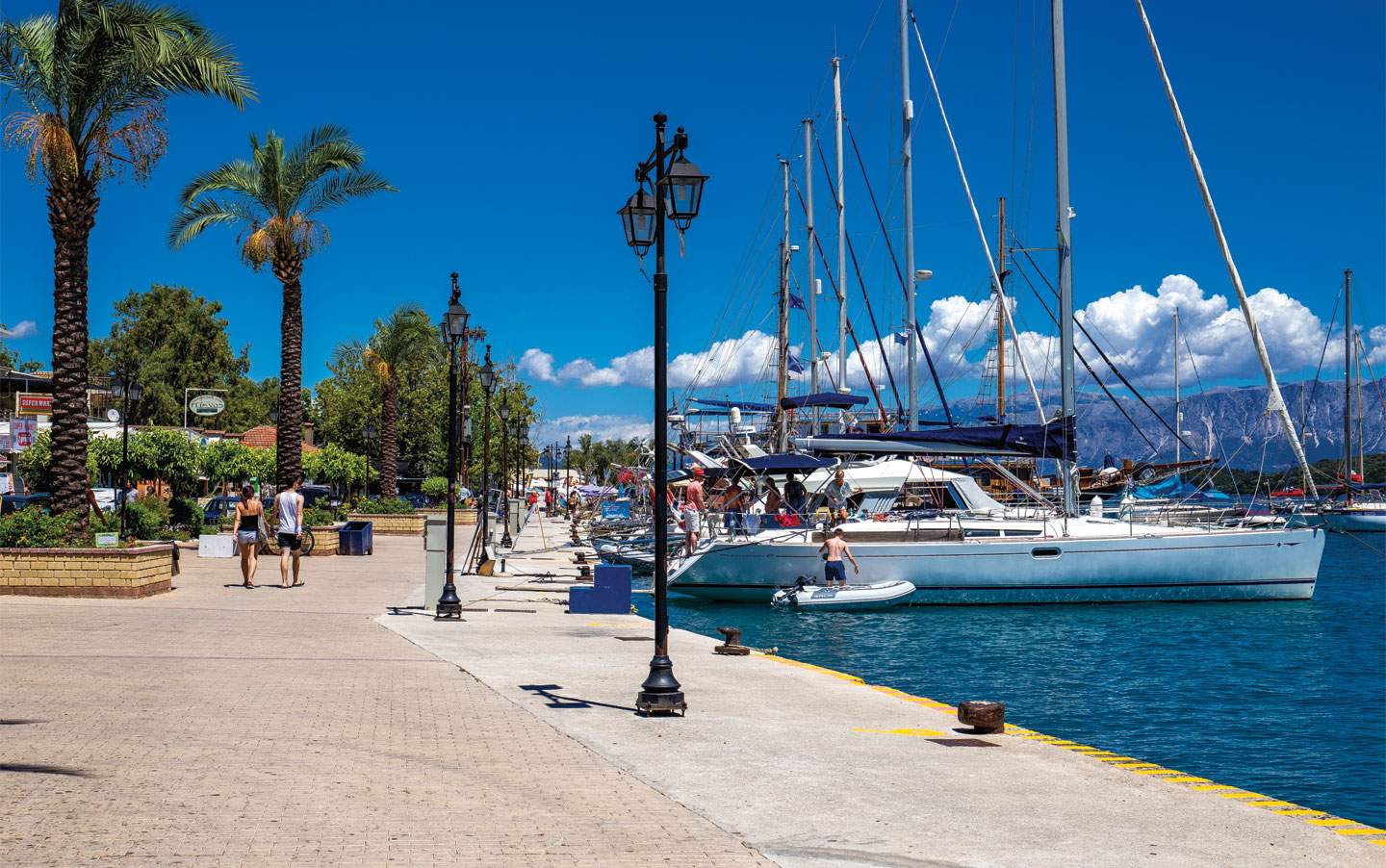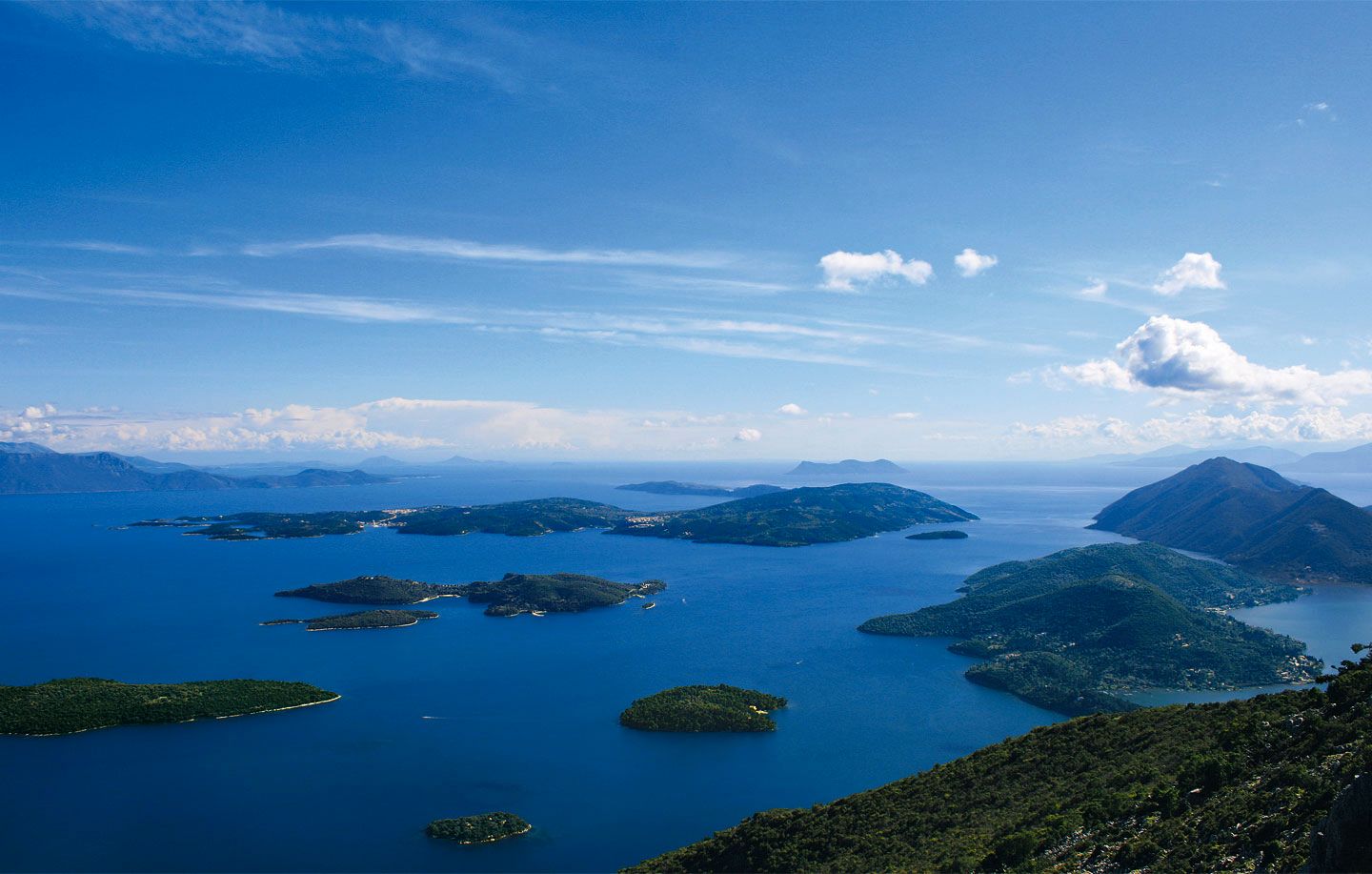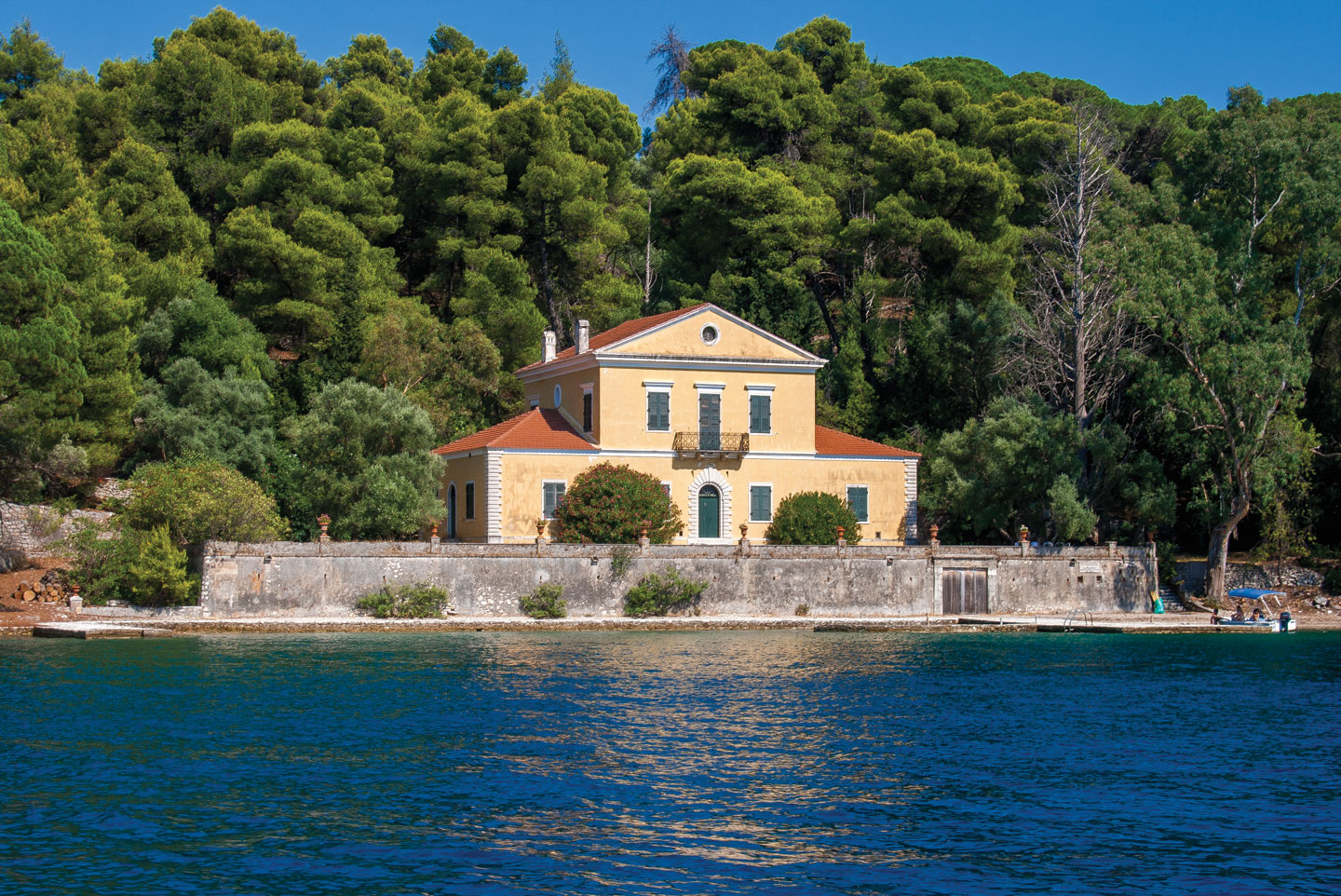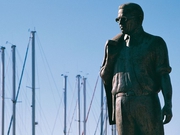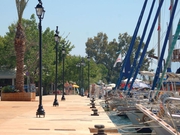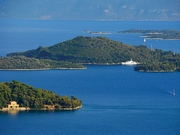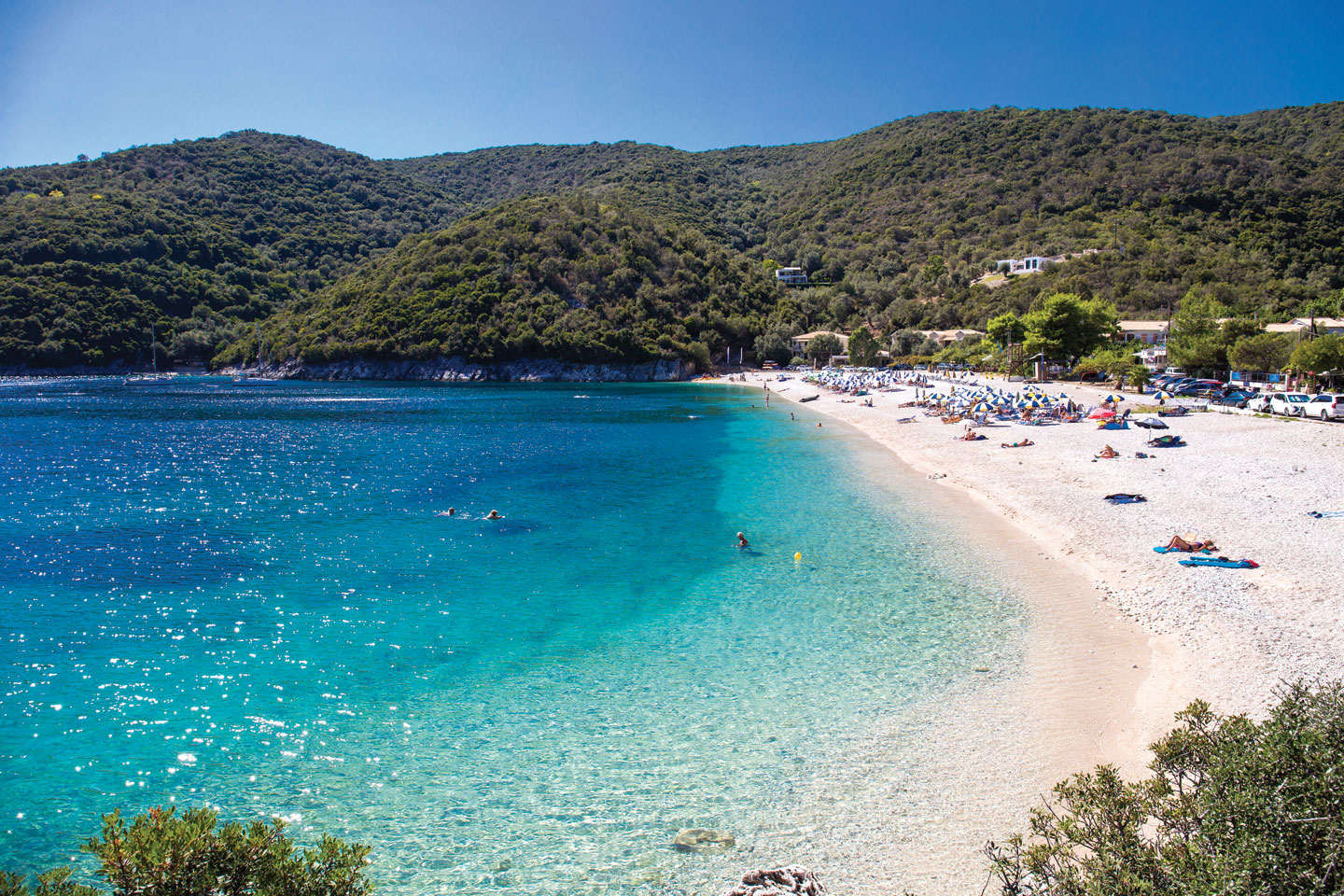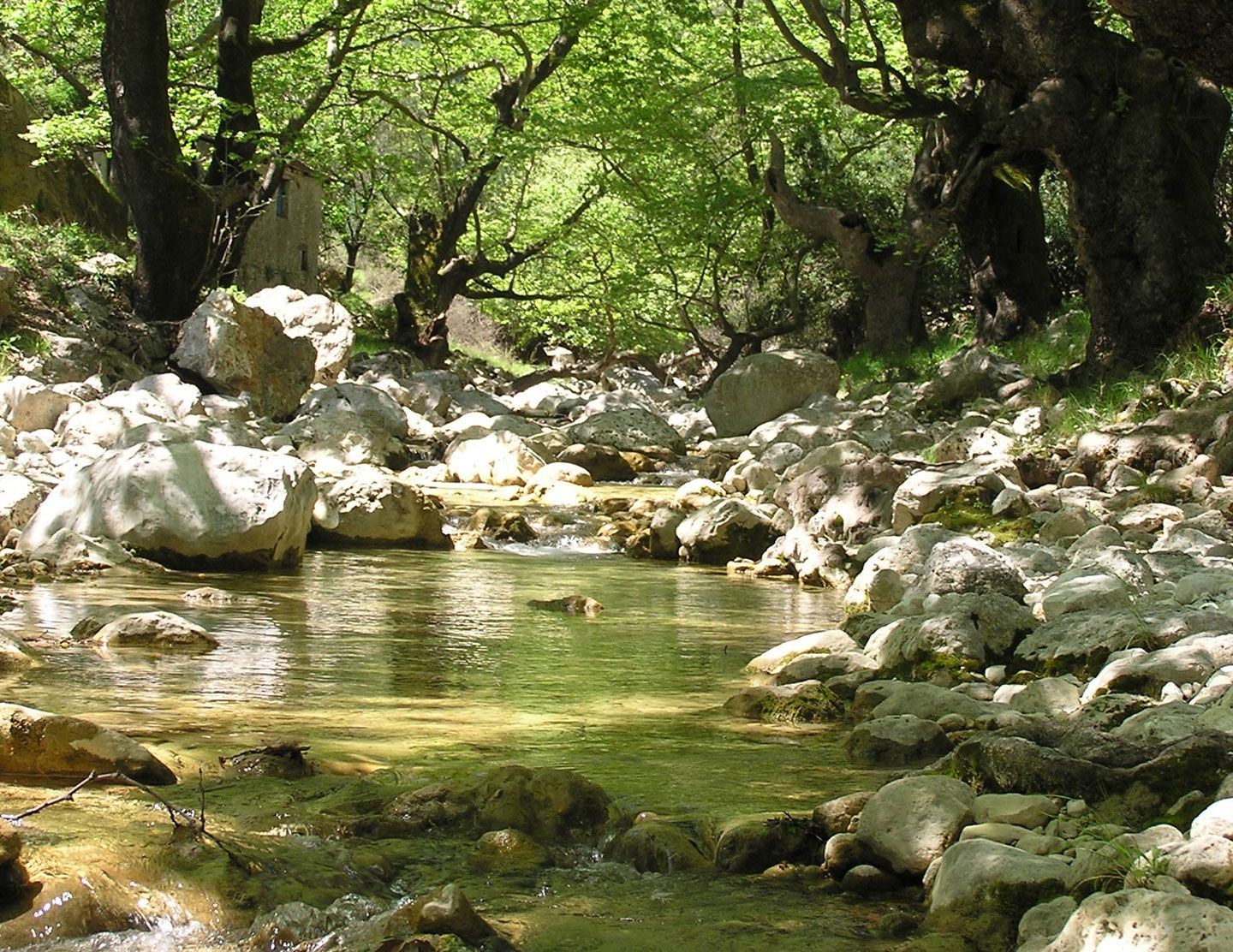Vlycho - Geni - Dessimi
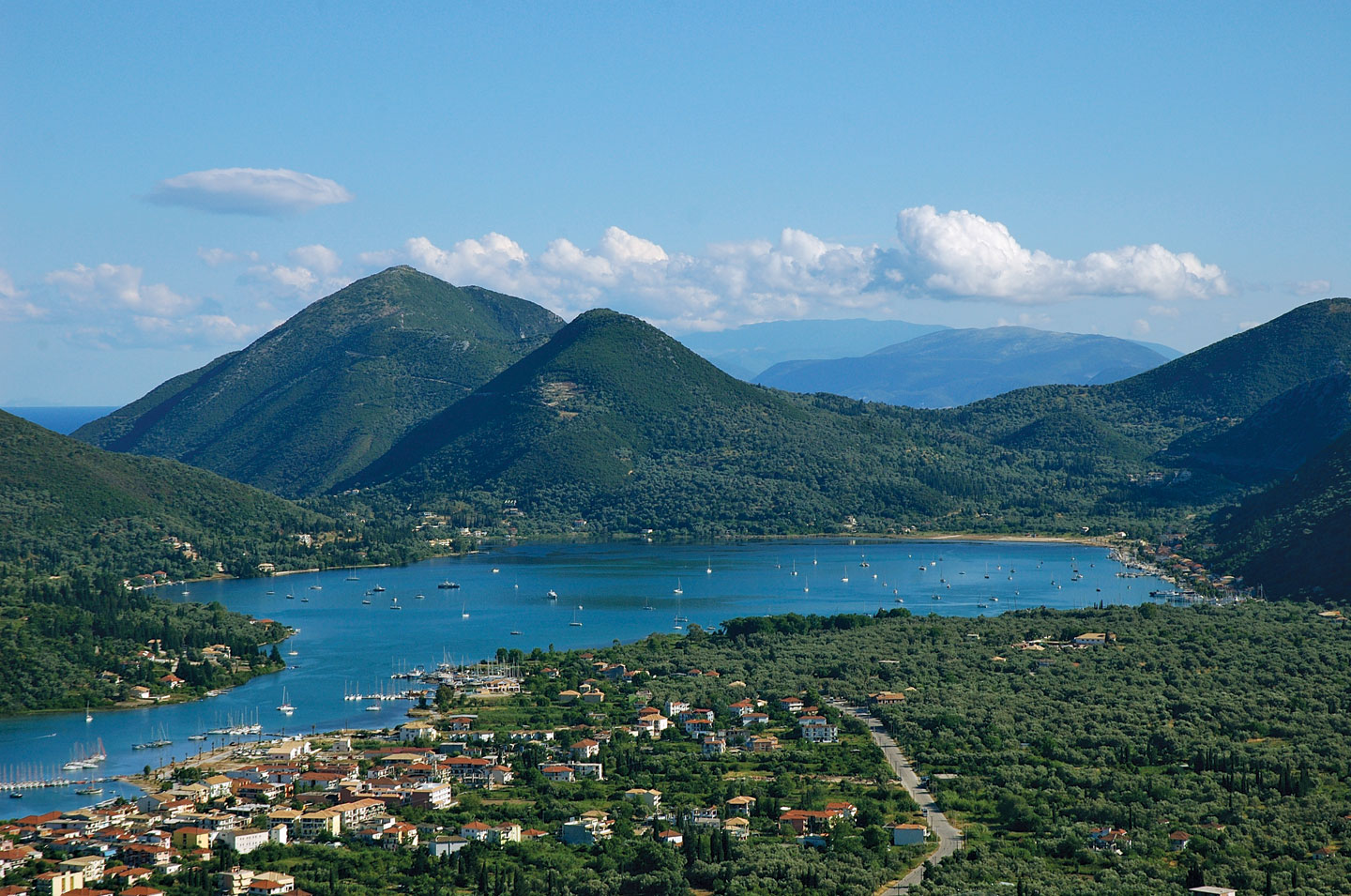
The village of Vlycho, 3 km south of Nydri, is in the traditional architectural style with a view over a beautiful bay. On leaving Vlycho there is a sign indicating left for Geni along a road through olive trees. The carriage road comes to an end at some point, and from there a picture-book footpath leads to the church of Agia Kyriaki built on a hill at the site of the ancient sanctuary of the Nymphs. The grave of the German Archaeoligist Wilhelm Dorpfeld is in the vicinity. The unruffled sea, paradisal little islands, Nydri and the tall mountains covered in lush green overlooking it.
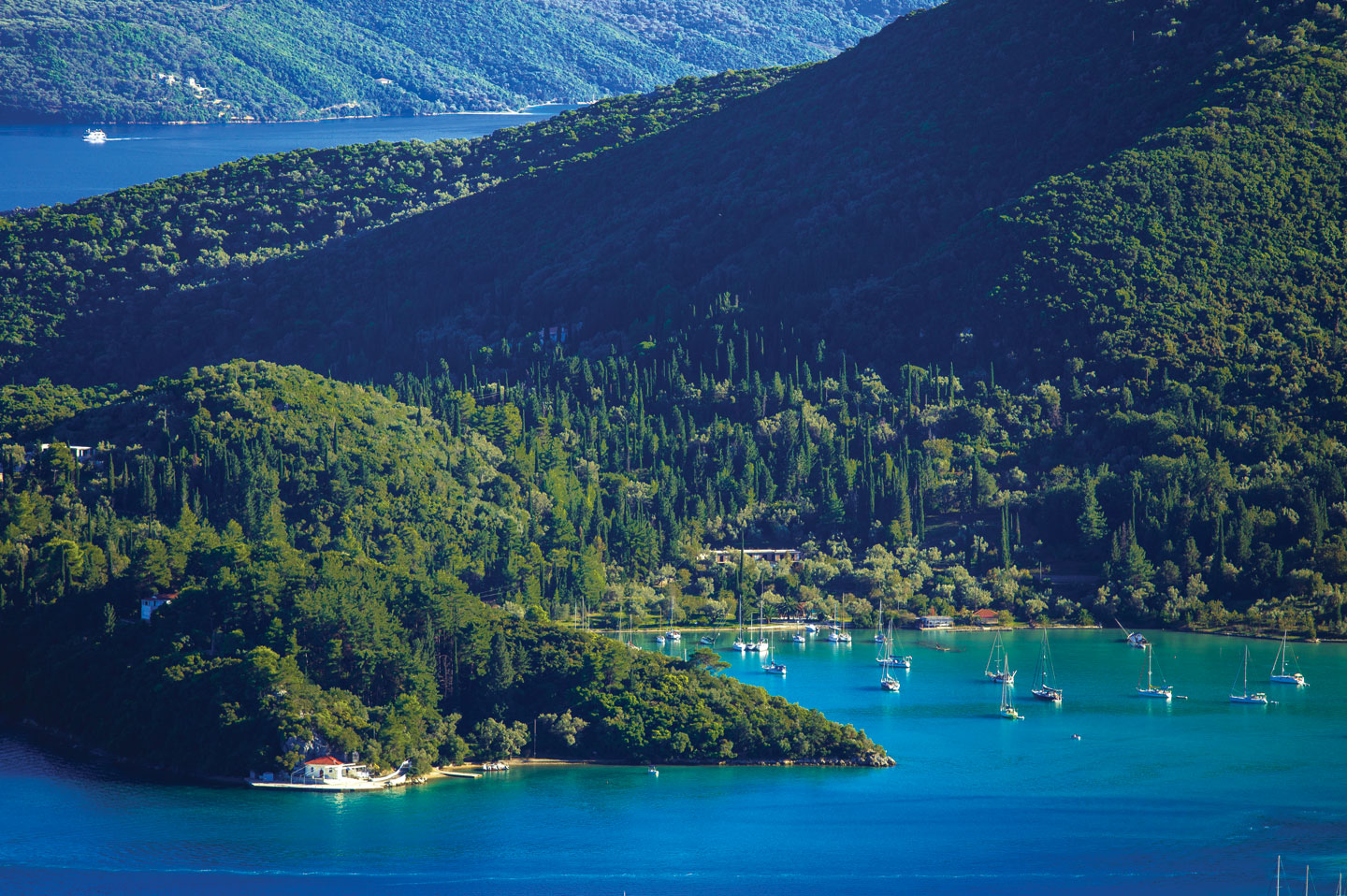
On the road back, there is another sign pointing left to Dessimi Bay. If you are there in the daytime, you will have an unforgettable swim in the emerald and always calm and clean waters of the cove, with Meganissi opposite in the background, or, about 2.5 km further, there is another lovely and unfrequented beach at Fteri, but drive carefully on the dirt road. If you want a bite to eat after your swim, we suggest returning to the area of Geni to enjoy a meal at one of the restaurants next to the sea.
Then, we return to Vlycho to continue our route. Detour: A short way past Vlycho you can turn off to go up to Katohori. In the past, this was the main village of the area and the municipal seat. It is worth taking the trouble to visit the remarkable churches and the stone-built houses and especially the church of Agios Charalabos for its 16th century frescoes.
Read more: Nydri, Lefkada: The cosmopolitan village that will astound you

